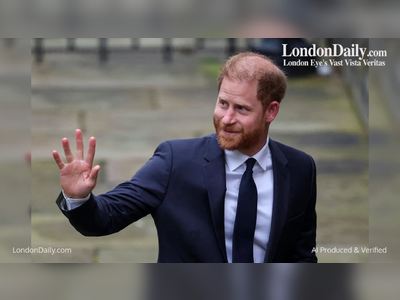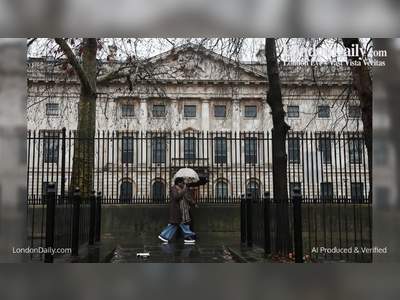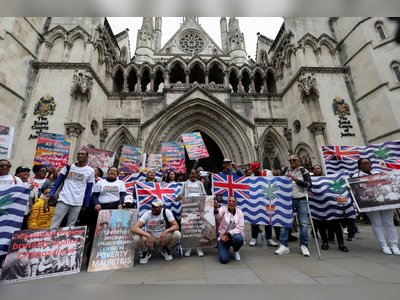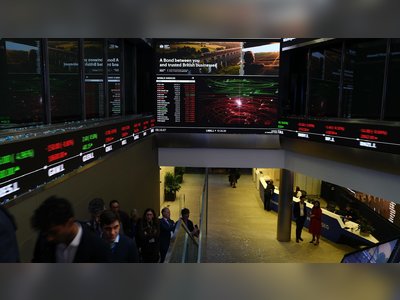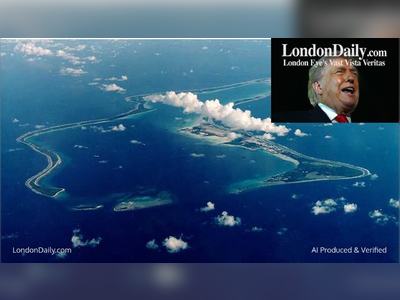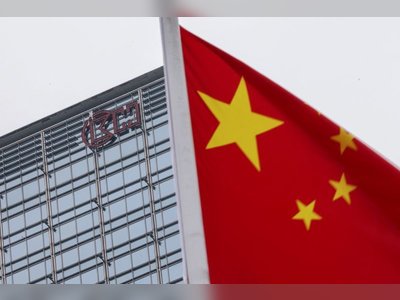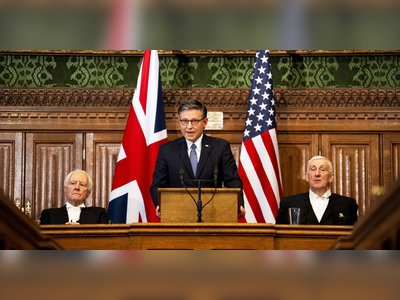
If You Have Enough Money, You Might Want to Buy These Military Aircraft
You have come to the right place if you are, by any chance, thinking of getting a personal plane all to yourself. You must be very rich if you are considering it, although it can’t hurt to go and see what is out there as well. After all, we never know what the future holds! Let’s see what options there are for you.
Lockheed F-104 Starfighter
In the late ‘50s, the world was introduced to the Lockheed F-104 Starfighter. It was used in different militaries all over the globe until the turn of the decade. Italy, Turkey, Spain, Germany, and the United States all used this aircraft at one point or another in the past. This model has since been retired, so private buyers can buy it if they want. Kelly Johnson, the renowned aeronautical engineer, helped develop the Starfighter. He also helped with the development of the SR-71 Blackbird and the U-2 spy plane. It proved to be deadly and saw a lot of controversies when it was still operational. At any rate, the FAA said that there are ten privately-owned units in the United States. Three of those are ex-Canadian military units that belong to a civilian demonstration team called Starfighters Inc. In 2011, a restored but engineless unit went for sale in the United Kingdom at the asking price of £25,000.
North American P-51 Mustang
You can call the P-51 Mustang a North American classic. It was first developed for the British as a medium-altitude fighter plane during the Second World. However, it surpassed all expectations. It was able to reach greater heights and more power when the Rolls Royce Merlin engine, and then the Packard V-1650-7, was introduced to it. This model played a vital role in reconnaissance missions and escorted a lot of bombers in several wars due to its long-range capabilities. In recent years, it became sought-after thanks to its historically accurate total restoration. The restored units can go for more than a million dollars on the market. It has a max speed of 430 miles per hour and can deliver an excellent time if you are fortunate enough to be able to take it out for a spin.
Supermarine Spitfire
Did you know that the Supermarine Spitfire was the aircraft most produced by the British during the Second World War? It was the only one that was continually produced during the conflict as well. There had been a couple of variants of it with different wing designs. However, the 50 Supermarine Spitfire continues to be airworthy even today. In fact, a lot of people consider it the most important aircraft during the Second World War thanks to its contribution to the Battle of Britain. Recently, a unit was auctioned off for 2.5 million euros or almost $3 million. The Spitfire superseded the Hawker Hurricane over the course of the war. Civilians want to get their hands on this model thanks to its historical value.
F-4 Phantom II
At the moment, you can get an F-4 Phantom II for $3.95 million. It is one of the rarest aircraft on the list. In 1960, it became a part of the fleet of the U.S. Air Force and continues to be in limited use even though it is considered retired. This is listed as a two-seat long-range supersonic fighter-bomber and jet interceptor. In those days, aircraft engineering possibilities felt like they were changing with every single second, it made a debut with a splash. With a top speed of more than Mach 2.2 and a carrying capacity of more than 18,000 pounds, you can bet that it was a sight for the enemies to fear. And rightfully so.
Curtiss P-40 Warhawk
This is an aircraft that goes by a lot of names such as Gypsy Rose Lee, Kittyhawk, Tomahawk, and Model 81. At any rate, the Curtis P-40 Warhawk had been a key player in the skies during the Second World War. It was actually among the three most used US fighters during the conflict. It has seen a lot of upgrades over the course of its lifetime due to performance shortcomings and issues. Despite all of these things, it is not deemed a “top fighter.” Even so, you just can’t deny that it looks very cool. It is one of the reasons it is popular amongst aviation fans across the globe. At the moment, Courtesy Aircraft Sales is selling a restored unit for the price of $1.775 million. It is a lot of money, but it makes sense due to the rarity of the model. The P-40 is known as an aircraft that skilled pilots could handle, but it was not the best among the best. We are sure that a wealthy enthusiast would love to get their hands on a unit.
B-29 Superfortress
Even with our current standards, the B-29 Superfortress is a beast of an airplane. Boeing developed this model in the early ‘40s and added advanced features that elevated the bomber plane. Among other things, it had pressurized crew areas and remote-controlled guns. It also became known as the heaviest production plane in the world! This was yet another crucial aircraft during the Second World War. The B-29 went on to perform different jobs like in-flight refueling and reconnaissance missions. We are not surprised to hear that it is popular since it has such a rich history. Only one unit called “Fifi” stayed active in the air as of July 2016. But it changed when “Doc” was flown for the first time on July 17, 2016. The two planes are privately owned, although there is support to restore others to make them flyable.
Northrop F-5
Here, we have a lightweight supersonic jet fighter that has a few models under its belt. The Northrop F-5 was first introduced in 1962 and is mostly known for how simple, low maintenance yet effective it is in the air and on the ground. On top of that, it was heavily exported and was important in the militaries of the Allied nations. It continues to be used as a training aircraft in the United States! This is a supersonic jet fighter that can max out at more than a thousand miles an hour. That makes it among the fastest military aircraft available to civilians out there. You might want to get a training planed called Talon T-38 if you want to own and fly one of these babies. Based on the F5, it was developed by the same company.
Bell UH-1 Huey
Out there, the Bell UH-1 Huey is known as one of the most used military choppers on the planet. Right now, it is used by 40 countries. We do not know about you, but this does not make it any less thrilling! It was first introduced during the Vietnam war. In those days, it was used in various missions. There are certain variations that served as MedEvac and transported both staff and students alike. It can go for 125 miles an hour and can carry a crew of one to four people. This aircraft is a symbol of the Vietnam war and goes for $500,000 or so. That is so much cheaper than new versions since the latest versions cost $25 million per aircraft instead. We do not know about you, but this sounds like a great deal.
Lockheed T-33 T-Bird
When the Lockheed P-80 Shooting Star was introduced, it brought a lot of changes for the United States Air Forces. The new planes did not fly through propellers and handled things differently from those that came before them. The propeller-driven trainers did not prove effective in preparation for the P-8-s. In the end, the military elongated the fuselage of the P-80 and added a second tandem seat. This was how we got the Allison J33-A-35 turbojet that ran on a T-33 Shooting Star. It was the first USAF jet fighter training aircraft! Only around 1,700 P-80 units were produced, but the T-Bird was more suitable for the military market and saw 7,000 units all over the world. There are still militaries that use it, although it is believed that about fifty of them have made it to civilian operators.
Douglass A-4 Skyhawk
In case you did not know, the Douglas A-4 Skyhawk was first meant to take the place of the A-1 Skyraider in the US Navy. Ed Heinemann of Douglas Aircraft had been the chief design engineer of it. He came up with a small aircraft that was effective but simple at the same time. You will find the engine in the fuselage, the fuel in the wings, and the nose in the avionics. The Navy went on to call this compact bomber “Heinemann’s Hot Road” and started using it after the Korean War. After that, the Marine Corps started using it too. There were two or more A-4 Skyhawk squadrons in the carrier wings once the Vietnam War started. The A-4 was the first one to introduce the “buddy” air-to-air refueling system as well. It continues to be inactive service in other countries, but you can buy one if so desired.
Mikoyan-Gurevich MiG 21
After the Mikoyan-Gurevich MiG 21 was introduced in 1959, it went on to be a staple plane in different military air forces out there. This was mostly used by the Indian, Libyan, and Soviet Air Forces. This was the first Soviet aircraft that could perform fighting and intercepting abilities successfully. In fact, it held a few world records such as the most produced supersonic aircraft in the world. Even though it is still in use in other countries, it is possible to get this military aircraft for private use as well. It is believed that the Soviet Union and its allies made about 10,000 units in the last four decades. The FAA said that you will find 44 MiG 21s for sale in the United States. Three of those are for sale at Premier Space Systems in Portland for $150,000 or so. It does private and public sub-orbital atmospheric space launch services.
General Dynamics F-16 Fighting Falcon
Yes, you did not misread that. You can buy a General Dynamics F-16 Fighting Falcon for more than $8 million at a sale in Florida. Make sure to read the fine print as you will need to follow some very demanding defense contracts. On top of that, it will cost you some $8.5 million to bring this baby home.
Hawker Hunter
In the late ‘40s and early ‘50s, the Royal Air Force of the United Kingdom commissioned the MK-58 Hawker Hunter as a fighter jet. It eventually came to be used for fighter-bomber and intelligence-gathering roles. They made single and double pilot versions of it. This was exported heavily and has served in other militaries across the globe. In 2014, it received its official retirement and is now considered to be a “warbird.” It maxed out at just below 700 miles an hour and was considered among the greatest early fighters. We are sure that military aviation enthusiasts want a copy for their personal use. They are not that rare, so you can probably do that if you have enough money. Many of them are in possession of groups that do aerial demonstrations, although the military still uses some of them for threat simulation and target training as well.
Aeo L-39 Albatross
For some people, the first thing that comes to mind when they hear “warbird” is the L-39 Albatross. Aero Vedochody developed it as a training aircraft in Czechoslovakia. This was the first jet trainer of the Second Generation. It is not difficult to understand why this is such a hit among civilian-military aviation enthusiasts. With its sleek design and smooth operation, it just makes sense to buy it if your pockets go deep enough. It has a 40 foot long by 31-foot wingspan, 3800 lbs of thrust, a range of more than 650 miles, and an Ivchenko-Progress AI-25TL high-bypass turbofan engine. This can fly on internal fuel for two and a half hours, which is quite impressive. You can get one if you have $150,000 to spare.
Grumman OV-1 Mohawk
In the ‘50s, the Grumman OV-1 was made to replace the Cessna L-19 Bird Dog. It was used by the US Army as an all-weather observation and attack plane that could go faster and deliver more power than the Bird Dog. The OV-1 Mohawk concept earned the Grumman Aircraft Corporation an award! After all, it turned out to be nothing like anything that has been made before. The Mohawk was actually the first turboprop plane that the US Army put to active use. It was a success in a number of military roles. The bullet-proof windows and aluminum-alloy floor kept it safe from small ground arms, while its mounted engines and large finned tails granted it great maneuverability. There is at least one variant with advanced side-looking radar and internal camera. This let it scan the ground and offer tracking, which was very advanced back then. In 1996, it was retired by the US Army. Aviation fans are very fond of it.
Hawker Siddeley Harrier GR.3
In the ‘60s, Hawker Siddeley developed the Hawker Siddeley Harrier for the Royal Air Force. It ran on the concept of the vertical/short take-off and landing, which had been attempted several times in those days. This was the first one to succeed, however. The RAF placed an order for the GR.1 and GR.3 variants. A subtly modified version called the AV-8A was also exported to the Marine Corps of the United States in the ‘70s. The GR.3 was a single-seat, single-engine jet that was 46 feet long with a wingspan of 25 feet. A Rolls Royce Pegasus 103 turbofan-powered it. Four vertical flight puffer jets were mounted in its tail, nose, and wingtips. Thanks to its V/STOL capability, it did not need long runways nor ground facilities like all the other aircraft at the time. It played a huge and important role during the Falklands War. In 2011, the RAF finally retired it. You can find some units on sale on the open market.
Boeing F/A-18 Hornet
A real estate agent and pilot from Illinois by the name of Don Kirlin bought not just one but several squadrons of surplus Boeing F/A-18 Hornets from the Royal Australian Air Force. This model was used for contractor adversary air support in the United States. Each unit is believed to be worth $5 million.
Sukhoi Su-27
In the past decade or so, the Sukhoi Su-27 became available to civilians. The military aircraft was made by the Soviets in the hopes of competing with the Fourth Generation of F-14s and F-15s. With its amazing stats, it makes for a truly exciting aircraft. It has supermaneuverability, twin engines, and a max speed of Mach 1.8. Get ready for the ride of a lifetime when you get your hands on this bad boy! It is very big, with a length of more than 10 feet and a width of 5 feet over the F-15. It had ten weapons hardpoints and protected radar technology, but they were removed before it hit the market. The fuel has to be carried inside of the plane, so the stripped version is the fastest and lightest out there. It has an asking price of $5 million, which might sound steep but suits the power packed into this war machine.
Migoyan-Gurevich MiG-29
The Soviet Union also developed the Mikoyan-Gurevich MiG-29 in the hopes of competing with the American F-16. Made in the ‘70s, it is a big fighter plane that is 57 feet long with a wingspan of 37 feet. This is fueled by twin turbofan engines and can go as fast as Mach 2.25 in the air. This was a versatile plane even though it was meant for air to air combat at first. It proved useful when it came to precision targeting and air to surface as well. Upon the dissolution of the Soviet Union, the former members had a surplus of it. They went on to export these units to more than 30 nations, although India topped the list as its biggest export operator. The United States also bought a small fleet to study the capabilities of this aircraft some more. If any of you happen to be interested in one of these babies, get ready to shell out $5 million or so. Should you actually have the means to do that, know that we are very jealous of you?
Grumman F9F Panther
This was the first jet fighter to be developed by Grumman! The F9F Panther was a single-engine plane with straight wings that proved its worth as a day fighter. It could also carry a lot of air to ground weapons. This was among the first successful carrier-based jet fighters in the US Navy. The aircraft got a lot of action during the Korean War and even performed almost half the attack missions conducted by the Navy and Marine Corps. The Panther actually has a lot of firsts to its name. It earned the first air-to-air kill of the US Navy in Korea, for one. This was also the first military aircraft used by the Blue Angels. The F9Fs were generally pulled out of the front-line service during the middle of the ‘50s, although others were kept in us for training in the next few years. Consider yourself very lucky if you have a flyable unit as only two privately owned units exist in the United States. Only one of them can fly.
Douglass DC-3
In retrospect, you can call the DC-3 one of the first aircraft that changed the game. This is a cargo or transport aircraft that took its duty to a whole new level. It could carry cargo weighing 6,000 pounds or 21 to 32 passengers. It also boasts a range of 1,500 miles, which sounded impossible before it made it work. Its production came to an end in 1942, although there are at least several hundreds of it that can still fly. Its longevity is proof that Douglas built quality machines. The DC-3 was eventually reduced for military purposes and went on to be used as a special transport aircraft. The C-41 variant was used by the Secretary of War many times. In recent auctions, the price of a unit went for around $250,000.
Folland Gnat
Here is yet another small but powerful fighter jet that the British developed in the ‘50s. The Folland Gnat, sometimes called the “Pocket Fighter,” delivered an impressive performance and cemented its place in the air force history of different nations out there. It could go up to 10,000 feet per minute, as well as a roll at over 360 degrees per second. This was a very agile and maneuverable plane in those days. The British used it for advanced training after it placed an order for its first six test planes. The Gnat was also used in fighter roles in India, Finland, and Yugoslavia. It played a big role when India and Pakistan went to war. In Finland, it set the record as the first plane to go past the speed of sound. They have since been retired, although you can buy this warbird if you have $200,000 that you do not need.
Saab 35 Draken
This is an amazing jet fighter that can keep up with bombers in the sky and fight off enemies when needed. Saab was a Swedish manufacturer who became known for its development of the 35 Draken. With its distinctive design, the jet was suited for both low-speed and high-speed performance. The Swedish Defense Material Administration needed it to be able to do short takeoffs and landings, which explains its interesting double delta shape. Saab delivered well on that note. The 35 Draken was the first supersonic fighter in Western Europe. The Austrian Air Force still uses it, although Sweden retired it after using it for nearly four decades. In the United States, it was used as a testing aircraft by NASA and many other government agencies. It is possible to buy this as a private owner. The plane has been featured in commercials of Miller beers as well!
Panavia Tornado
This fighter jet was a collaboration between the United Kingdom, Italy, and West Germany in the ‘70s. The Panavia Tornado was meant to fulfill a number of combat roles and went on to be a staple in different militaries in the European region. It continues to fly as part of some of them in this day and age. They made three main variants: the air defense, the interdictor/strike, and the electronic warfare/reconnaissance versions. When it is high in the sky, it can achieve Mach 2.2 speeds. At sea level, on the other hand, the max speed is 900 miles per hour. This is known for its maneuverability, brought about by its variable-sweep wings. Pilots also like how quiet and spacious its cockpit is. These qualities have turned it into the ideal military plane. Due to its rarity, it is a good idea to jump on the possibility to buy it as soon as you can.
Dassault Alpha Jet
Did you know that the Dassault/Dornier Alpha was the result of a collaborative effort between Germany and France? They had their own reasons for making it. France wanted to use it as a training aircraft, while Germany planned to use it for light attack missions. Alpha Jet E was the name of the French version, while the German one was dubbed Alpha Jet A. The French had been delighted by the performance of its own, although some commanders found it nearly too forgiving with its handling. It made it harder to make the transition to other planes. The Germans, on the other hand, started phasing out its Alpha Jets in the ‘90s. They sold a lot of the aircraft to some private owners and other militaries. The Flying Bulls bought four of them and use them in air shows. This is pretty rare, and you can bring one home for about a million bucks or so.
Vought F4U Corsair
It depends on the unit itself, but the Corsair was created by Chance, Goodyear, and Vought. The first ones entered the United States Navy in 1942. They are credited for changing the game in the Pacific theatre during the Second World War. The model had been legendary when it came to air-to-air combat against the Zero planes of the Japanese. More than 12,000 fighter planes were built by the United States. Estimates claim that there are around 50 units left in the country. The F4U Corsair, on the other hand, was occasionally made by Goodyear. Recently, an FG-1D Corsair went up for sale for $4.1 million.
Hawker Sea Fury
The Hawker Sea Fury was the last propeller fighter aircraft used by the Naval Navy. It saw plenty of action during the Korean War, even though it was built with the Second World War in mind. The plane was late to the party, although it came in handy during the Bay of Pigs invasion in 1961. The Burmese Air Force used it from 1947 to 1968. Other nations used it in the past. On the list, we have Australia, Canada, Pakistan, and the United Kingdom. Recently, a highly-renovated unit of the model dubbed the “fastest Sea Fury ever” went for sale with a price tag of $750,000.
Hispano M4L Buchon
Are you familiar with the Hispano M4L Buchon? If not, allow us to explain that its design was inspired by the iconic Bf-109 fighter G-variant by Messerschmitt. A lot of people consider this to be the ultimate post-war development variant under the Bf-109 family. It was mostly used as a fighter aircraft in the Spanish Air Force. When its service came to an end, it was used in scenes of a Hollywood flick called The Battle of Britain. In 1952, the Buchon first saw flight. Spain had to deal with a couple of unserviceable units after a botched agreement with Germany. At any rate, this was the best attempt of the country to create the most out of a bad situation. It was in the Spanish Air Force all the way until 1965. We have seen a Buchon on the market, but we don’t know its real price right now.
Messerschmidt ME-262
In 1941, the Me-262 Schwalbe and the Sturmvogel were employed by the Luftwaffe. The first one was the fighter variant, whereas the latter was the fighter-bomber one. It was retired when the war ended in 1945. This plane was among the first ones in the conflict to come with jet engines, so it was a big threat. When the war ended, captured units were used as test subjects by Americans. The F-86 Sabre borrowed a lot of technology from the Me-262. There are not many of these babies left, and most of the remaining ones have both original and refurbished features. Recently, one of them went for $600,000 or so.
P-38 Lightning
If you consider yourself an aviation enthusiast, you might already be familiar with the F-35 Lightning II. We doubt that you know a lot about the Lightning I, however. The P-38 was used during the Second World War as a piston-engine fighter, although it turned out to be more than that. It was used in interception, ground attack, dive bombing, photo reconnaissance, night fighting, level bombing, radar pathfinding, and long-range escort. This aircraft was used by different countries all over the world such as the United Kingdom, the United States, China, Australia, France, Portugal, and Italy. You can also buy one for yourself as a civilian. However, we sure hope that you have $650,000 at your disposal for this.
North American T-6 Texan
This two-seat advanced trainer was a familiar aircraft to a lot of pilots of the Allied nations during the Second World War. The North American Aviation T-6 Texan was also called the SNJ by the Navy, as well as the Harvard by the British Royal Air Force. It helped train tens of thousands of pilots in a total of 34 different countries. This took place in a span of 25 years. Within that time period, they produced 15,495 units. It won honors during the Second World War, as well as the Korean War. Despite this, it is still best known as a trainer. You can buy one as long as you have $200,000 in your bank account.
Curtiss C-46 Commando
Fun fact: the Curtiss C-46 Commando remains in active use in remote locations in the world. It was used as a military cargo aircraft and saw a lot of action in the mid-‘40s. It was among the first military planes to have pressurized cabins as well. This was in use at the same time that the Boeing Stratoliner and the DC-4 were. This was a paratroop drop plane as well, although many of them were lost. This is the reason they were pulled from this duty. The C-46 does not have a clean military record, and a lot of soldiers could not stand it. Despite this, it is a historically significant plane that will cost you $250,000.
Grumman G-21 Goose
Here is another plane with a lot of firsts to its name. Made by Grumman, the G-21 Goose was the first twin-engine aircraft, the first aircraft used as a commercial airliner, and the first single-wing aircraft. How impressive is that? It is capable on both land and water, so it has seen a lot of uses in the decades that it had been in use. The longevity of the aircraft proves the mastery of its designers and engineers. It was considered an “air yacht” for rich businessmen in New York who had to commute from Long Island to Manhattan. It was eventually used as an airliner, utility aircraft, and military transport too.
North American B-25 Mitchell
Isn’t it neat to learn that the Boeing B-25 Mitchell was named in honor of Brigadier General William “Billy” Mitchell? It was a twin-engine bomber that proved to be a low-level and high-level bomber at the same time. This plane was also used as a fighter, photo-reconnaissance, and submarine patrol plane. North American Aviation built around 10,000 units from 1939 to 1945. The first unit to fly went up in the air in August 1940. The United States Army Air Corps introduced the first five planes in February 1941. This sparked the race to build as many as they could! Overall, North American Aviation made a total of 9,816 B-25s in the two plants in Kansas and California. Recently, one of them went for $1.4 million.
Canadair CF-5 Freedom Fighter
The Canadair CF-5 Freedom Fighter was considered a breakthrough when it comes to air combat technology. This was popular during the ‘60s as the ultra-low radar cross-section made it hard to see at long range. This was the closest thing they got to a stealth fighter back in the day. It was a small “pocket fighter” created from scratch as a dog-fighter. Please note that it was also very cheap to make this, which was excellent as it was made to outnumber NATO nations. The aircraft relied on hi-tech avionics and the performance of expensive planes such as the F-4 Phantom but cost the same as the Russian MiG-21. Not that long ago, a private buyer bought a unit. The going price has not been disclosed, however.
Mitsubishi A6M “Zero” Resin
During the Second World War, the undisputed quintessential plane of the Japanese had been the Mitsubishi A6M Reisen. Also known as the Zero fighter, Mitsubishi designed it. However, Nakajima co-produced the aircraft. Together, the companies produced over 10,000 units of it from 1939 to 1945. The Japanese Navy staff asked the companies to make proposals for a new aircraft that could take the place of the Mitsubishi A5M carrier fighter. This plane was legendary in terms of air kills. We are sad to admit that we do not know the current asking price for a unit.
Short Tucano Trainer
Here, we have a two-seat turboprop basic trainer aircraft. The Short Tucano Trainer was built in Northern Island by Short Brothers. Its main operator had been the Royal Air Force, although it exports the plane to Kuwait and Kenya every now and then. The prototype was first flown in 1986. Two years after that, the Royal Air Force received its first units. This plane is mainly operated at RAF Linton-on-Ouse, where it offers basic training to student pilots of the RN and RAF. Students fly around 130 hours with it before they transition to the Hawk T2 aircraft trainer. You can bring one home with you for approximately $1.3 million.
